A Comprehensive Guide to Home Composting
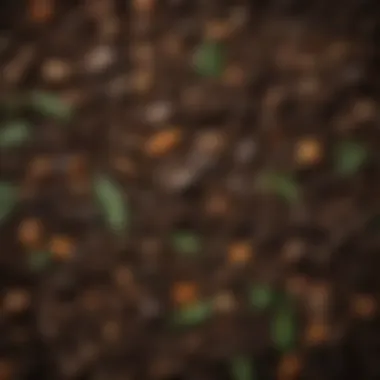
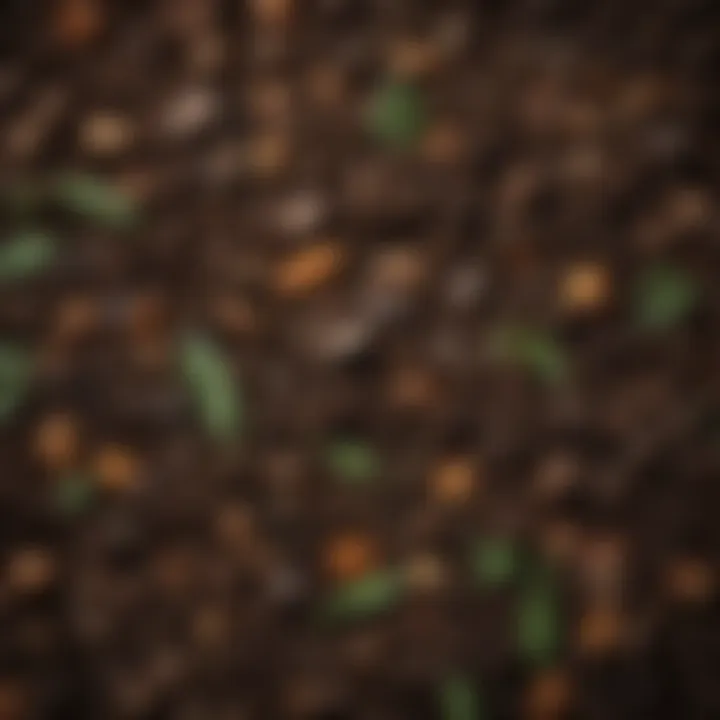
Intro
Composting is an essential practice in sustainable living. As awareness of environmental issues rises, more people are looking into ways to reduce waste and enhance their garden’s health. This guide is here to explain the fundamentals of home composting. It will cover the reasons to compost, the right materials to use, various methods, and solutions to common issues that can arise. The ultimate aim is to empower individuals to adopt composting, benefiting both their gardens and the environment at large.
Composting transforms waste into valuable resources. This article will help you navigate the process, making it easier to create nutrient-rich soil for your plants. Whether you are a seasoned gardener or just starting, understanding composting will enhance your gardening practices.
Preamble to Composting at Home
Composting at home is not just an eco-friendly practice; it is also an investment in the health of your garden and the environment. Understanding how to effectively compost is crucial for anyone interested in sustainable living. Home composting allows individuals to recycle organic waste while creating a nutrient-rich soil amendment. This practice can significantly reduce the volume of waste sent to landfills, which in turn contribute to better overall waste management.
Starting to compost can seem intimidating. However, it becomes simpler with knowledge and practice. The environmental benefits are profound. Composting enriches the soil, promotes plant growth, and helps retain moisture. It enhances the biodiversity of soil organisms, which is vital for a balanced ecosystem. Besides, it reduces greenhouse gas emissions by preventing organic matter from decomposing anaerobically in landfills.
There are several aspects one must consider when starting composting at home. Choosing the right materials, understanding the balance between carbon and nitrogen sources, and ensuring proper aeration are all integral to the process. Furthermore, recognizing the variety of methods available allows you to select one that fits your lifestyle and space constraints.
In this section of the guide, we will walk through the key elements that will set the foundation for successful home composting. This includes benefits, considerations, and practical advice for getting started. Whether you are a homeowner looking to improve your garden or an eco-conscious individual seeking to minimize your environmental footprint, mastering the basics of composting at home is indispensable.
"Composting is a way to promote sustainable urban living, turning waste into a resource."
Acquiring this knowledge opens pathways to not only enhance your gardening endeavors but also to lead a more environmentally conscious lifestyle.
Importance of Composting
Composting plays a crucial role in sustainable living. It not only aids in reducing waste but fosters healthier ecosystems. This section details the environmental and health advantages of composting. By understanding these elements, one can appreciate the importance of composting in home and community practices.
Environmental Impact
Composting directly impacts our environment in several ways. It significantly reduces landfill waste. Traditional waste disposal creates methane gas, a powerful greenhouse gas. In contrast, when organic materials decompose naturally in compost, they create a nutrient-rich mixture without producing harmful gases.
Some key points regarding its environmental benefits include:
- Waste Reduction: Composting can divert approximately 30% of household waste from landfills. This helps conserve space and prolong the life of landfills.
- Biodiversity Support: Compost enriches soil, leading to healthier plants that can support diverse ecosystems. Healthier plants attract various wildlife, promoting biodiversity.
- Water Conservation: Well-composted soil has superior water retention capabilities, reducing the need for irrigation. This can be particularly beneficial in drought-prone areas.
By embracing composting, one can participate in mitigating environmental issues while fostering a more sustainable lifestyle.
Enhancing Soil Health
Healthy soil is the foundation of strong plant growth. Compost provides vital nutrients that enhance soil structure and fertility. It contains essential elements such as nitrogen, phosphorus, and potassium, which are critical for plant growth.
The advantages of composting for soil health are numerous:
- Nutrient-Rich Amendment: Compost replenishes the soil with organic matter. This enriches the nutrient profile, leading to more productive plants.
- Improved Soil Structure: The addition of compost helps bind soil particles, leading to better aeration and drainage. This creates a more conducive environment for root development.
- Disease Suppression: Healthy compost can suppress pathogens in the soil. This leads to healthier plants that are more resilient to diseases.
Composting creates conditions that promote vibrant and healthy plants, which in turn supports a flourishing garden ecosystem.
Materials Needed for Composting
Understanding the materials needed for composting is fundamental for successful home composting. The right materials help in creating a balanced compost pile, which is crucial for speeding up the decomposition process and ensuring nutrient-rich compost. Two main categories of composting materials are brown materials and green materials. Additionally, the right levels of water and air are pivotal to maintain healthy compost conditions.
Brown Materials
Brown materials, also known as carbon-rich materials, are essential for composting. These materials provide energy for microorganisms that decompose your compost. Common examples include dry leaves, straw, cardboard, and wood chips. Brown materials tend to be dry and fibrous.
When adding brown materials, aim for a ratio of approximately three parts brown to one-part green materials. This ratio helps achieve a balanced compost mixture. Without sufficient brown materials, the compost pile may become overly wet and smelly, leading to a sluggish decomposition process.
Green Materials
In contrast, green materials are nitrogen-rich and crucial for composting. These include kitchen scraps such as fruit and vegetable peels, coffee grounds, egg shells, and fresh grass clippings. The nitrogen content in green materials supports the growth of the microorganisms responsible for breaking down organic matter.
However, be mindful not to overload your compost bin with too many green materials as they can lead to excess moisture and odor issues. A diverse mix of both brown and green materials creates a healthier compost heap.
Water and Air Requirements
Proper moisture and aeration are critical for maintaining an efficient composting process. Water helps microorganisms thrive, while airflow provides oxygen required for aerobic decomposition. It's important to maintain the moisture level similar to that of a damp sponge.
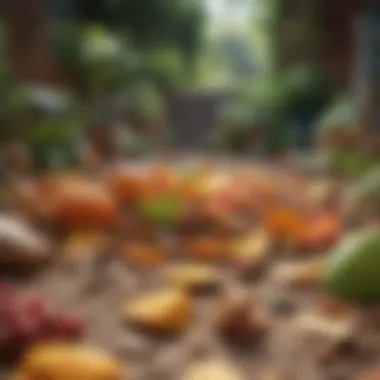
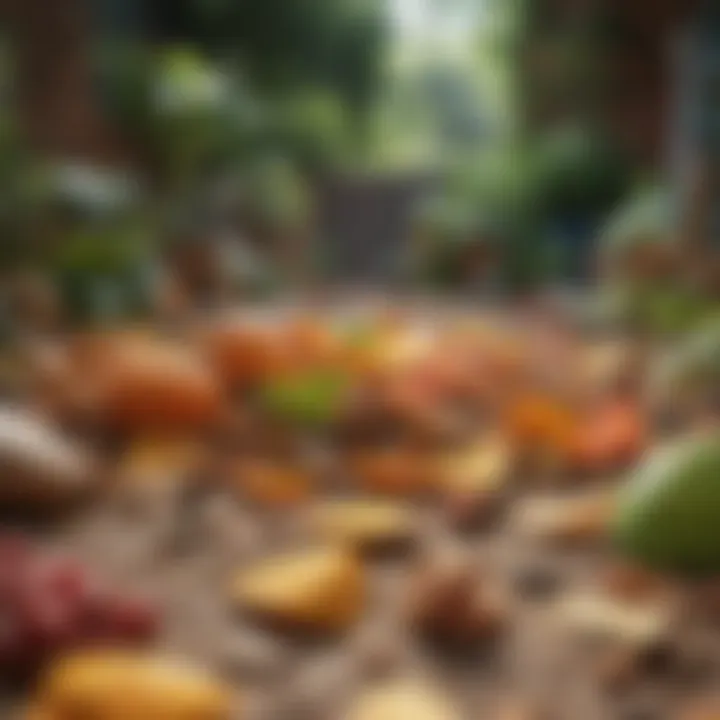
If the compost appears too dry, it's helpful to add water or more green materials. Conversely, if there is excess moisture, turning the pile can increase aeration and help clarify the content.
Properly managing the balance of these materials will guarantee that your compost not only breaks down efficiently but also yields high-quality compost for your gardening needs.
In summary, comprehending the materials needed for composting sets the foundation for effective composting at home. Each type of material plays a role in the decomposition cycle, contributing to rich compost that benefits your plants and overall garden health.
Methods of Composting
The methods of composting play a crucial role in the efficiency and effectiveness of creating compost. Selecting the right method can influence the speed of decomposition, the quality of the finished product, and the overall experience of composting. There are several techniques available, each with its own unique features and requirements. Whether you have limited space or want a fast process, understanding these methods will help you make an informed choice.
Traditional Composting
Traditional composting is perhaps the most recognized method. It involves layering brown and green materials within a compost bin or a pile in the garden. Brown materials, like dry leaves and cardboard, provide carbon, while green materials, such as kitchen scraps and lawn clippings, supply nitrogen. This balance is important for effective decomposition. The process can take several months to a year, depending on conditions like moisture, aeration, and temperature.
An important consideration for traditional composting is the need for regular turning. This aerates the pile, promoting faster breakdown of materials and minimizing odors. Additionally, monitoring moisture is vital. A compost pile should feel damp, like a wrung-out sponge, to support microbial activity.
Vermicomposting
Vermicomposting employs worms to break down organic matter. Red wigglers, the most common type of composting worms, can consume half their weight in food scraps daily. This method is particularly suitable for people with limited outdoor space, as it can be done indoors in a bin.
The process is simple: feed the worms kitchen scraps, then monitor the moisture and temperature within the bin. Vermicompost is rich in nutrients and beneficial microbes, making it an excellent addition to garden soil. One of the main benefits of vermicomposting is reduced odor, as the worms digest organic matter efficiently.
Tumbler Composting
Tumbler composting is an efficient option for those who want to speed up the composting process. A compost tumbler is a sealed container that allows users to rotate it. This motion enhances aeration and mixes the materials effectively. The turning action reduces the time it takes for compost to mature, often creating finished compost within a few weeks.
When using this method, it is essential to fill the tumbler in layers of green and brown materials, and to add water as needed. However, there are considerations, such as the capacity of the tumbler and its placement. Enough space is crucial for optimal decomposition.
Bokashi Method
The Bokashi method takes a different approach by using a fermentation process rather than traditional aerobic decomposition. This method involves layering food waste with Bokashi bran, which contains beneficial microbes. Once the container is full, it is sealed and left to ferment for a couple of weeks.
The end product of Bokashi is not finished compost but a pre-compost that can be buried in soil or added to an existing compost pile. This process is particularly advantageous for composting meat and dairy, which are typically avoided in traditional composting methods. With Bokashi, odors are contained. Moreover, it enriches the soil, creating a nutrient-dense environment for plants.
Choosing the right composting method depends on personal preferences, available space, and the types of materials you wish to compost. Understanding the nuances of each method can lead to a more satisfying composting experience and contribute significantly to garden health.
Setting Up Your Compost Bin
The process of composting begins with the appropriate setup of your compost bin. This initial step holds significant weight in how efficiently your composting will work. Setting up your compost bin effectively can influence the speed, quality, and even the convenience of the composting process. A well-structured approach not only enhances decomposition but also minimizes problems such as odors and pests.
Choosing the Right Location
Selecting the right location for your compost bin is crucial. Ideally, the site should be accessible for adding materials and turning the compost. Consider the following factors when choosing:
- Sunlight exposure: A sunny spot can help to speed up the decomposition process by maintaining overall warmth. A shaded area may work in hotter climates to prevent overheating.
- Drainage: Ensure the site has good drainage. If water tends to pool, it can lead to anaerobic conditions that produce bad smells.
- Proximity to kitchen and garden: Positioning the bin near your kitchen encourages regular contributions of kitchen scraps. Also, having it close to the garden makes it convenient to use finished compost.
"Location is key in creating a successful composting system."
Selecting a Compost Bin
Once you have chosen an appropriate location, the next step is selecting a compost bin. The type of bin will impact your composting experience. There are various options available, each with its own benefits and considerations:
- Traditional compost bins: These are open or enclosed structures that allow for aeration, which is essential for quick decomposition.
- Tumbler composters: These are perfect for smaller spaces. They are easy to rotate and mix, promoting aeration and speeding up composting.
- DIY compost bins: If you prefer a homemade approach, you can create a bin using wooden pallets or other materials. Simplicity is the key; ensure that air can flow.
- Worm bins for vermicomposting: For those looking for an indoor option, a worm bin offers a mess-free way to compost kitchen scraps while producing nutrient-rich castings.
It is vital to consider your lifestyle and the space available before selecting a bin. Remember that the right setup not only makes the composting easier, it also enhances the overall success of turning organic waste into soil-friendly compost.
How to Start Composting
Starting composting is a crucial step for anyone interested in reducing waste and enhancing their gardening efforts. Successful composting not only diverts organic materials from landfills but also produces nutrient-rich soil which is essential for healthy plants. Understanding the basics and key techniques is necessary to ensure an effective composting process. This section will delve into fundamental aspects that one needs to consider when beginning composting at home.
Layering Materials
One of the essential elements of composting is the concept of layering materials. This method involves alternating between two main categories of compost ingredients: brown materials and green materials. Brown materials are high in carbon, such as dry leaves, twigs, and cardboard. These materials provide energy for the microorganisms that break down organic matter. Green materials, on the other hand, are rich in nitrogen. Examples include kitchen scraps like vegetable peels, grass clippings, and coffee grounds.
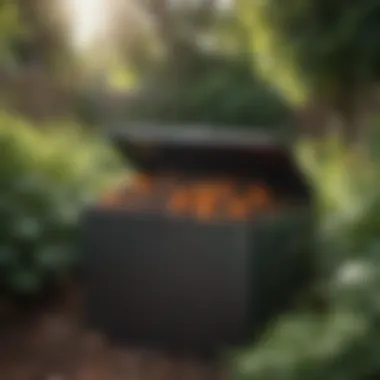
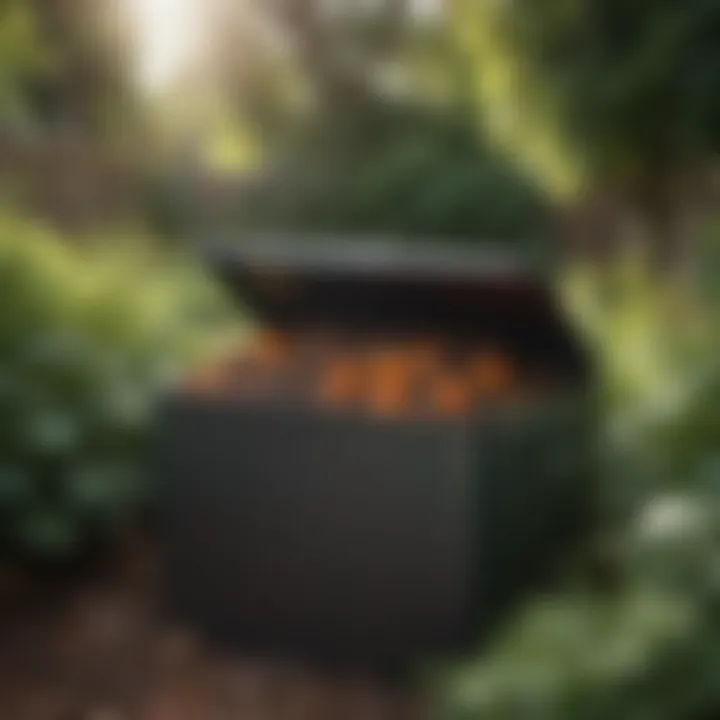
To create an effective compost pile, aim for a ratio of roughly three parts brown materials to one part green materials. Layering helps balance nutrients and aeration, facilitating the decomposition process. It's sensible to add a small amount of soil or finished compost in each layer to introduce beneficial microorganisms.
- Layer Suggestions:
- Bottom Layer: Coarse brown materials like straw or small branches for drainage.
- Middle Layers: Alternating layers of green and brown materials. Ensure greens are chopped up for quicker decomposition.
- Top Layer: A final layer of brown materials to cover the compost.
Maintaining Moisture Levels
Moisture plays a vital role in composting. Maintaining the right moisture level is essential for the breaking down of materials. A good rule of thumb to follow is that the compost should feel like a damp sponge—not too wet and not too dry.
If the compost is too dry, the decomposition process slows down. Regularly turning your pile can help distribute moisture evenly. Alternatively, if it becomes too wet, excess water can be drained. During dry spells, consider adding water or moist materials to balance the moisture level.
- Tips for Moisture Maintenance:
- Check Regularly: Monitor moisture levels at least once a week.
- Adjust as Needed: Add water if dry, or mix in dry browns if too wet.
- Mulch Cover: Use a tarp or mulch to regulate moisture levels during heavy rain.
"Composting is the art of recycling organic matter, transforming waste into valuable resources for your garden."
Starting composting provides numerous benefits that go beyond just plants. Whether you're driven by environmental values, or the desire to garden sustainably, understanding the core principles of layering and moisture maintenance is critical in creating a successful compost pile.
Monitoring the Composting Process
Monitoring the composting process is essential for achieving high-quality compost. Regular observation allows for adjustments based on the conditions of the compost pile. It ensures that the materials are breaking down efficiently and contributes to producing a rich, nutrient-dense end product suitable for gardening and landscaping. By keeping a close eye on the compost, you can address issues early, such as odors or pests, and guarantee that the compost reaches its full potential.
Turning the Pile
Turning the pile is a pivotal part of compost management. Aeration is important to ensure that oxygen reaches all parts of the compost, facilitating aerobic decomposition. When microorganisms break down the organic matter, they consume oxygen and produce heat. Turning the pile redistributes materials and promotes even decomposition. Ideally, you should turn the compost every few weeks or whenever it begins to smell. The process also helps to mix the brown and green materials, maintaining a balanced carbon-to-nitrogen ratio. Using a pitchfork or a shovel, turn the compost by moving the outer materials to the center, allowing for thorough mixing.
Recognizing the Stages of Decomposition
Understanding the stages of decomposition will inform you when to turn the pile or when the compost is ready to use. There are typically four stages:
- Mesophilic Stage: This initial stage lasts several days and is characterized by the activity of mesophilic bacteria. They proliferate, raising the compost temperature significantly.
- Thermophilic Stage: In this stage, thermophilic bacteria take over. The temperature can rise to 130-160°F (54-71°C). This stage is crucial as it allows pathogens and weed seeds to be killed off in the process. Notably, this stage lasts from several days to several weeks.
- Cooling Stage: As temperatures begin to decrease, mesophilic bacteria may return. The compost pile will eventually cool down, and a portion of the material will still be breaking down.
- Maturation Stage: During this final stage, the organic material is transformed into humus. At this point, the compost should have a dark color and earthy smell, indicating readiness for use in gardens.
By closely monitoring these stages, you understand when your compost is actively decomposing and when it is ready to enrich your soil.
Common Issues in Composting
Composting is a valuable activity, yet it is not without its challenges. Understanding common issues in composting helps you create a more efficient and effective system. This section will identify frequent problems and provide guidance on resolving them. Both beginner and experienced composters can benefit from this knowledge, ensuring that your composting journey is as smooth as possible.
Dealing with Odors
Odors can arise from a compost bin for several reasons. A foul smell often indicates an imbalance in materials, usually from excess nitrogen-rich greens, which can become anaerobic. It is critical to identify the signs and fix issues promptly. When compost gives off a strong odor, it can deter gardeners from continuing the practice, potentially sending them back to the conventional waste management systems that harm the environment.
To mitigate odors:
- Ensure a balanced mix between green materials and brown materials. Aim for a ratio of about 1:3.
- Turn the compost regularly to allow air to circulate, promoting aerobic decomposition.
- Monitor moisture levels; too much water can lead to anaerobic conditions. The compost should be as moist as a sponge, feeling damp but not soaking.
By actively managing these factors, you create a more pleasant composting experience.
Addressing Pests
Pests, such as fruit flies and rodents, can become a nuisance in compost bins. Their presence often signals deeper issues with compost management. Pests typically invade due to the scent of decomposing food waste, particularly from excess nitrogen-rich materials.
Here are some strategies to deter unwanted guests:
- Cover food scraps with brown materials immediately. This not only wards off pests but also helps balance the compost ratio.
- Avoid adding meat, dairy, and oils to your compost, which can attract rodents and insects.
- Use a compost bin with a lid that seals well. This creates barriers for critters while providing necessary aeration.
Using Compost in Gardening
Using compost in gardening is an essential practice that not only enhances plant health but also promotes sustainability. Compost enriches the soil by adding organic material that improves its structure, nutrient content, and overall fertility. Its usage leads to better water retention and aeration, which is crucial for root health.
Incorporating into Soil
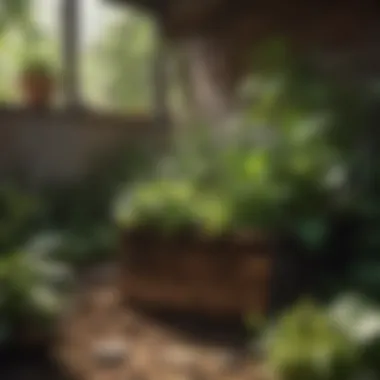
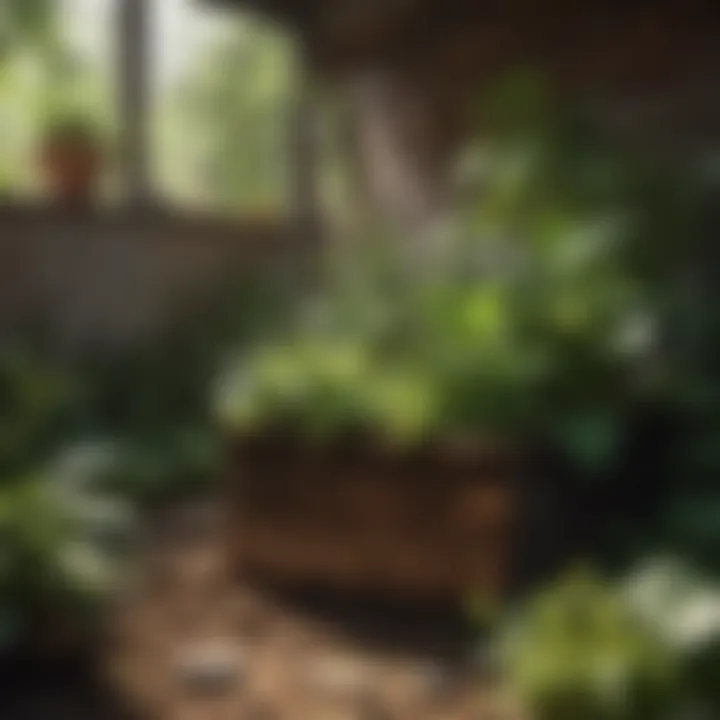
Incorporating compost into your soil is a straightforward process that can yield significant benefits. Mixing well-aged compost with your garden soil improves its texture and nutrition levels. This practice can be done in various ways to ensure proper blending:
- Top Dressing: Apply a layer of compost on the soil surface around plants. This method gradually enriches the soil as it breaks down over time.
- Tilling: Mix compost directly into the soil before planting. This allows for immediate access to nutrients, promoting healthier growth from the beginning.
- Planting Pits and Rows: Mixing compost into planting holes or furrows ensures that plant roots encounter nutrient-rich material right at the start.
Compost should be well-decomposed for best results. Fresh compost can lead to nutrient imbalances or even inhibit seed germination due to its high nitrogen content. To optimize nutrient release, allow your compost to mature fully before use.
Creating Compost Tea
Compost tea is a liquid fertilizer made by steeping compost in water. This method extracts the beneficial microorganisms and nutrients from the compost, creating a potent solution beneficial for plants. There are two primary methods for creating compost tea:
- Aerated Compost Tea (ACT): By using an aerator, colonies of beneficial bacteria and fungi thrive. This is done by bubbling air through a mixture of compost and water, usually over a 24-48 hour period.
- Non-Aerated Compost Tea: Involves simply soaking compost in water for several days without aeration. This method is simpler, but might not produce as high a concentration of beneficial microorganisms as the aerated version.
To use compost tea effectively, dilute it with water to prevent overwhelming your plants with nutrients. Apply it to the soil or as a foliar spray to enhance plant health, fend off diseases, and stimulate growth. Remember that while compost tea is rich in nutrients, it should complement, not replace, regular soil amendments.
"Using compost not only enriches your plants but also contributes to a healthier environment."
Benefits of Compost at Home
Composting at home presents several distinct advantages that not only enrich personal gardening experience but also enhance environmental sustainability. Understanding these benefits is vital for anyone looking to embrace composting. Home composting transforms waste, reduces landfill contributions, and spruces the soil quality of your garden, making it a central practice in responsible living.
Waste Reduction
One of the most immediate and observable benefits of composting at home is its capability of waste reduction. By composting, homeowners can divert a significant portion of their kitchen scraps and yard waste away from landfills. In many cases, organic waste constitutes a large part of household trash, which can contribute to greenhouse gas emissions as it decomposes in a landfill.
When a compost bin is utilized, food scraps such as vegetable peels, coffee grounds, and eggshells are repurposed instead of becoming waste. This practice not only lessens the volume of trash but also contributes positively to reducing the overall impact on the environment. It is estimated that over 30% of what is thrown away could be composted. Furthermore, separating organic matter from regular trash easily leads to a reduction in the frequency of trash collection, thus promoting lower waste management costs.
"Composting can divert more than 30% of household waste from landfills, turning trash into treasure for gardens."
Nutrient-Rich Soil for Plants
Creating compost results in organic matter that enriches the soil when utilized in gardens. Compost is a natural fertilizer, packed with nutrients that plants crave. This nutrient-rich soil amendment improves not only the fertility of the garden but also soil structure and drainage.
Compost introduces essential nutrients into the soil such as nitrogen, phosphorous, and potassium, all of which are critical for plant growth. Additionally, it enhances microbial life, fostering a healthy ecosystem that supports strong root development. Using compost reduces the need for chemical fertilizers, which can harm the environment and degrade soil quality over time.
Incorporating compost into gardening practices can lead to:
- Improved water retention in the soil.
- Enhanced soil texture, making it easier to till.
- Healthier plants with greater resistance to diseases.
Home composting, therefore, aligns well with sustainable gardening practices that seek not only to nourish plants but to maintain ecological balance.
Composting for the Future
Composting represents a crucial step towards sustainable living. With the world facing increasing waste challenges, composting provides a practical solution that benefits not just our gardens but the entire ecosystem. It helps in reducing landfill waste, enriching the soil, and promoting biodiversity. By understanding the implications of composting today, we align our actions with a healthier environment for future generations. We are at a critical juncture where adopting composting practices can significantly mitigate negative environmental impacts.
Sustainable Practices for Homeowners
For homeowners, integrating sustainable practices through composting can be straightforward yet impactful. To begin with, selecting the right composting method is essential. Traditional composting is feasible for most, while vermicomposting can be particularly beneficial in smaller spaces. Here are some pointers to adopt sustainable practices:
- Minimize Waste: Aim to compost as much food waste as possible, including fruit and vegetable scraps, coffee grounds, and eggshells. This reduces the overall waste sent to landfills.
- Choose Eco-friendly Materials: Use biodegradable products in your home. Instead of plastic bags, opt for reusable containers for storing food.
- Support Local Programs: Many communities have initiatives and resources for composting. Engaging with these can provide support and amplify your efforts.
- Maintain Your Compost: Regularly turn your compost pile and maintain proper moisture levels to ensure quick decomposition. This not only produces rich compost faster but also reduces odors.
By focusing on these sustainable practices, homeowners can contribute to circular waste management and ensure a healthier planet.
Educating Others about Composting
One of the most effective ways to promote composting is through education. This extends beyond one’s backyard and can foster a community-wide shift. Here are methods to share knowledge about composting:
- Workshops and Demonstrations: Arrange local workshops to demonstrate composting techniques. This can attract community interest and encourage participation.
- Leverage Social Media: Create informative posts about the importance of composting, sharing personal experiences and tips. Platforms like Reddit or Facebook provide great avenues for discussion.
- Develop Educational Materials: Hand out flyers or guides that explain the composting process and its benefits. Tailor the materials to cater to different learning styles.
- Collaborate with Schools: Engaging with educational institutions to incorporate composting into their curriculum can foster values of sustainability among young people.
Educating others creates a ripple effect, promoting awareness of the need for composting and its long-term benefits.
Closure
The key benefits of composting include:
- Soil Enrichment: Compost enhances soil structure, improving its ability to retain moisture and nutrients. This leads to more robust plant growth and better yields in gardens.
- Cost Efficiency: By utilizing compost, homeowners can reduce the need for chemical fertilizers. This represents a long-term cost-saving measure in gardening expenses.
- Reduction of Greenhouse Gas Emissions: By diverting organic waste from landfills, composting reduces methane emissions, a greenhouse gas significantly more potent than carbon dioxide.
When considering composting, thoughtful implementation can lead to optimal results. Homeowners should pay attention to factors such as material layering and moisture levels. Understanding the decomposition process will also support more effective management of the composting system.
Ultimately, the practice of composting equips individuals with a practical approach to sustainable living. As awareness of environmental issues grows, the role of home composting will likely become even more critical. Individuals can advocate for community engagement by educating others about sustainable practices, spreading knowledge about the benefits that can arise from composting.
In a world striving for ecological balance and sustainability, the act of composting supplants simple waste management. It embodies a commitment to fostering a healthier planet, making it a vital practice for future generations.







